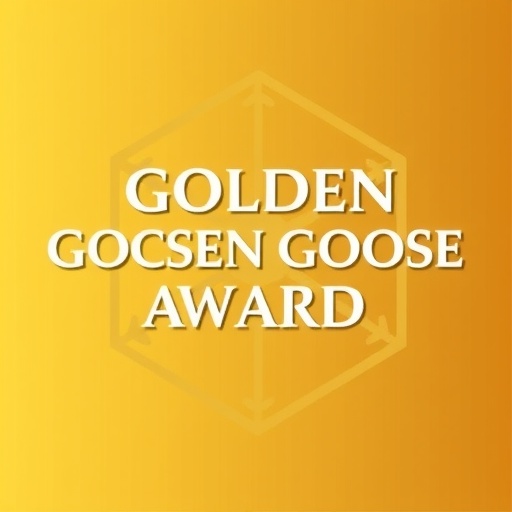
In a remarkable celebration of the unforeseen power of fundamental scientific research, the 14th annual Golden Goose Award has recognized groundbreaking studies whose seemingly obscure origins have revolutionized medicine and biology, transforming lives and expanding the boundaries of human knowledge. Held under the auspices of the American Association for the Advancement of Science (AAAS) and the Association of American Universities, the award honors those instances where curiosity-driven science—often dismissed as trivial—has yielded profound societal benefits. This year’s honorees include pioneers behind the cisplatin drug revolutionizing testicular cancer treatment and a visionary cell biologist whose work with nature’s peculiarities has influenced disease diagnostics and mentored many acclaimed scientists.
The first spotlighted research concerns a serendipitous discovery in the 1960s when Barnett “Barney” Rosenberg and his team set out to explore how electric fields affect bacterial cell division. Utilizing Escherichia coli, a model organism often employed for its simplicity and rapid growth, their experiments unexpectedly revealed that bacteria ceased dividing and instead elongated into bizarre filamentous forms. This counterintuitive observation triggered a cascade of follow-up investigations, wherein the research team identified that the phenomenon was not a direct consequence of electrical stimulation but rather the release of platinum compounds from the electrodes used in the experiment.
This realization led to the synthesis and clinical development of cisplatin, a platinum-based chemotherapy agent that, despite initial skepticism due to its heavy metal composition and potential toxicity, proved to be extraordinarily effective against certain cancers. Before cisplatin’s introduction, testicular cancer presented a bleak prognosis with survival rates hovering around ten percent. The implementation of platinum-based chemotherapy increased this survival rate to over ninety percent, fundamentally altering the therapeutic landscape for men aged 15 to 35 and saving countless lives worldwide. The drug’s mechanism involves platinum atoms binding to DNA in cancer cells, disrupting replication and leading to programmed cell death, a strategic mode of attack on rapidly dividing tumor cells.
The cisplatin breakthrough exemplifies the unpredictable trajectories of fundamental research, where initial curiosity about bacterial behavior sparked a chain of insights culminating in a life-saving drug. Funded by federal bodies such as the National Institutes of Health (NIH) and the National Science Foundation (NSF), this research underscores the critical role of public investment in the basic sciences. The findings are a potent rebuttal to contemporary budget proposals seeking to reduce funding for such research by nearly a third, a move that could jeopardize future scientific revolutions with comparable societal impact.
Parallel to this medical triumph is the influential work of Joseph G. Gall, whose fascination with nature’s biological oddities has profoundly enriched cellular and molecular biology. Gall was renowned for selecting unconventional model organisms, such as pond-dwelling Tetrahymena and amphibian oocytes, to probe fundamental biological questions. His methodological innovations, most notably the development of in situ hybridization, have become cornerstone techniques in modern biomedical research. This technique enables the precise localization and visualization of specific nucleic acid sequences within intact cells and tissues, thereby revealing gene expression patterns essential for understanding disease mechanisms.
Gall’s emphasis on studying telomeres—specialized DNA sequences protecting chromosome ends—via Tetrahymena has paved the way for critical insights into aging and cancer biology. Telomeres naturally shorten during cell division, and their dysfunction is linked to cellular senescence and oncogenesis. By elucidating telomere biology, Gall’s research has spawned new lines of inquiry into age-related diseases and therapeutic interventions aimed at modulating telomere length and function.
Beyond his scientific discoveries, Gall’s mentorship legacy is equally impactful. At a time when female representation in the sciences was markedly limited, he championed diversity and inclusivity within his laboratory, nurturing several scientists who later achieved international acclaim. His blending of visionary science with dedicated mentorship has seeded successive generations of research excellence, reflecting a holistic contribution to the scientific enterprise.
The Golden Goose Award, named to evoke the golden rewards of seemingly frivolous scientific ventures, serves as a counter-narrative to the misconception that curiosity-driven research is a waste of public funds. It celebrates the unpredictable yet transformative fruits borne from fundamental scientific inquiry. Earlier advocacy from figures such as former U.S. Representative Jim Cooper helped establish this tradition, underscoring the strategic value of supporting research without immediate commercial applications.
This year, the award ceremony, co-hosted at the prestigious Library of Congress, continues to galvanize bipartisan support for sustained federal investment in research. Notably, Representative Jay Obernolte’s recent participation highlights the growing recognition across political divides of the indispensable role that discovery-based science plays in national health, security, and innovation.
The stories behind these awards articulate an essential message: the journey from fundamental phenomena to applied breakthroughs is often nonlinear, marked by unexpected findings that challenge preconceived notions. Rosenberg’s accidental identification of platinum as a bioactive agent and Gall’s embrace of biological peculiarities exemplify how open-ended inquiry ignites innovation. Their work demonstrates that the utility of science is rarely apparent at inception but becomes clear as knowledge accumulates and interdisciplinary collaborations emerge.
As debates over research funding intensify, these awardees and their discoveries present compelling evidence that American science—bolstered by government support—remains a vital engine of progress. Scientific exploration nurtures intellectual curiosity and delivers solutions to pressing global challenges, from cancer treatment to understanding human aging. The Golden Goose Award serves as a beacon, encouraging continued investment in the unpredictable but invaluable landscape of fundamental research.
In honoring these scientists, the AAAS and its partners emphasize the enduring necessity of basic science as the wellspring of transformative technologies and therapies. With the future of research funding in flux, this recognition seeks to remind policymakers, the public, and the scientific community alike that today’s “odd” experiments lay the foundation for tomorrow’s lifesaving innovations.
As the scientific community gathers to celebrate this milestone, the stories of Rosenberg, VanCamp, Krigas, and Gall reaffirm the extraordinary outcomes possible when curiosity, opportunity, and sustained support for fundamental research converge. Their legacies inspire both current and aspiring scientists to pursue discovery with tenacity and imagination, assured that even the most unconventional inquiries can yield unprecedented societal benefits.
Subject of Research:
Platinum-based chemotherapy development for testicular cancer; cellular and molecular biology research involving in situ hybridization and telomere biology.
Article Title:
Golden Goose Award Recognizes Scientific Curiosity Turning Basic Research into Life-Saving Breakthroughs
News Publication Date:
September 16, 2025
Web References:
Golden Goose Award: https://www.goldengooseaward.org/
AAAS FY 2026 R&D Appropriations Dashboard: https://www.aaas.org/news/fy-2026-rd-appropriations-dashboard
References:
Research funded by the National Institutes of Health (NIH) and the National Science Foundation (NSF).
Keywords:
Cisplatin, Testicular cancer, Platinum-based chemotherapy, Cell biology, In situ hybridization, Telomeres, Fundamental research, Biomedical innovation, Scientific mentorship, American Association for the Advancement of Science, NIH funding, NSF funding
Tags: American Association for the Advancement of ScienceAssociation of American Universitiesbreakthroughs in disease diagnosticscisplatin drug developmentcuriosity-driven science impactsfederally funded cancer researchfundamental scientific researchGolden Goose Awardmentoring in scientific researchserendipitous scientific discoveriestesticular cancer treatment innovationstransformative medical discoveries




